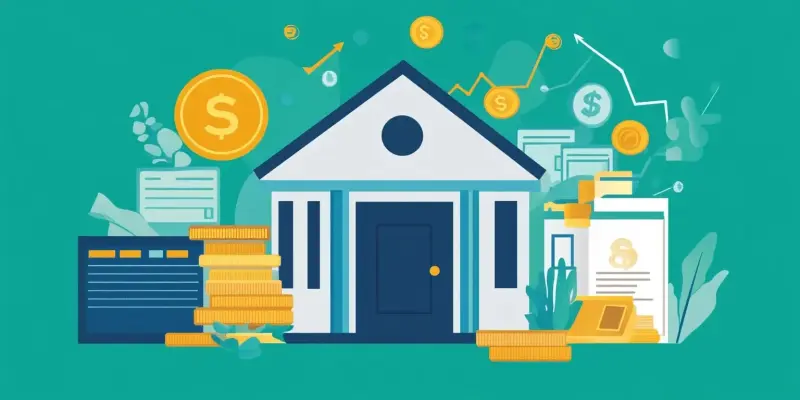In December, bank lending in the Philippines saw its most significant growth in two years, according to preliminary data from the Bangko Sentral ng Pilipinas (BSP). Outstanding loans by universal and commercial banks surged by 12.2% year-on-year to P13.1 trillion, compared to P11.7 trillion in December 2022. This marks the fastest pace of lending growth since December 2021 when it was recorded at 13.7%. On a seasonally adjusted basis, these loans increased by 1.4% month-on-month. The key question now is whether this growth is sustainable in the long run and what factors are contributing to this upward momentum.
Key Drivers of Bank Lending Growth
Production Activities and Consumer Loans
Loans extended to residents rose by 12.4% to P12.8 trillion, compared to an 11.4% increase in November. Lending to nonresidents also grew by 5.7% to P330 billion, up from 3.9% in the previous month. A significant portion of the lending growth for production activities came from sectors such as wholesale and retail trade, repair of motor vehicles and motorcycles (10.1%); electricity, gas, steam, and air-conditioning supply (14.2%); manufacturing (7.4%); financial and insurance activities (7.4%); and construction (12.6%).
Furthermore, consumer loans greatly increased by 25% in December, a rise from the 23.3% growth rate seen in November. The central bank attributed this surge to higher credit card loans, salary-based general-purpose consumption loans, and motor vehicle loans. Notably, credit card loans jumped by 29.4%, and salary-based loans swelled by 16.5%. However, motor vehicle loan growth decelerated slightly to 19.5% from 19.6%.
Impact of Monetary Policy
Rizal Commercial Banking Corp. Chief Economist Michael L. Ricafort attributed this upward momentum to the BSP’s easing cycle, which began with a rate-cutting phase in August of the previous year. The central bank reduced borrowing costs by 75 basis points (bps), bringing the key rate to 5.75% by the end of 2024. Analysts expect further rate cuts due to easing inflation, which could spur demand for loans by lowering financing costs.
Another notable factor is the BSP’s reduction of the reserve requirement ratio (RRR) by 250 bps to 7% in October, potentially increasing banks’ loanable funds. The agency plans to reduce the RRR further by 200 bps to 5% within the current year. These combined monetary policy measures are designed to make borrowing cheaper and more accessible for both consumers and businesses.
Economic Implications and Future Considerations
Domestic Liquidity and Economic Indicators
Finally, domestic liquidity (M3) advanced by 7.7% in December, maintaining the growth rate from November. M3, the broadest measure of liquidity within an economy, rose to P18.8 trillion from P17.4 trillion a year prior. Data indicated that domestic claims also grew by 10.4%, with private sector claims increasing by 12.2%. Net claims on the central government decelerated to a 7.2% growth rate. Additionally, net foreign assets (NFA) growth eased to 6% from November’s 9.8%, attributed to higher gross international reserves and an increase in banks’ bills and bonds payable.
The increase in domestic liquidity reflects an expanded capacity for lending, supporting the overall economic recovery. However, sustained growth will depend on various economic indicators such as inflation rates, employment figures, and global economic conditions. The evolving economic landscape will require careful monitoring to ensure that the lending growth remains sustainable and does not lead to financial instability.
Conclusion: Steps Forward for Sustaining Growth
According to preliminary data from the Bangko Sentral ng Pilipinas (BSP), December saw the most significant growth in bank lending in the Philippines in two years. Outstanding loans by universal and commercial banks jumped 12.2% year-over-year, reaching P13.1 trillion, up from P11.7 trillion in December 2022. This marks the fastest lending growth since December 2021, when it was recorded at 13.7%. On a seasonally adjusted basis, these loans also increased by 1.4% month-over-month. The key question now is whether this robust growth can be sustained over the long term and what factors are driving this upward momentum. Economic recovery, increasing consumer confidence, and favorable interest rates could all be contributing factors. The continuous monitoring by BSP and macroeconomic stability will likely play crucial roles in maintaining this growth trend. Analysts are keenly observing how external factors, such as global economic conditions and domestic policies, will impact future lending growth in the Philippines.

